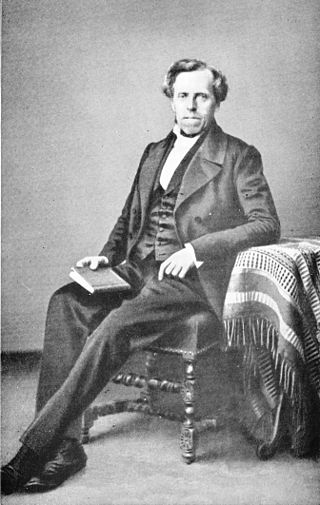
Jean Baptiste Alphonse Déchauffour de Boisduval was a French lepidopterist, botanist, and physician.

Pierre-Hippolyte Lucas was a French entomologist.

Jules Pierre Rambur was a French entomologist.

Achille Guenée was a French lawyer and entomologist.

Pierre-Justin-Marie Macquart was a French entomologist specialising in the study of Diptera. He worked on world species as well as European and described many new species.
Entomology, the study of insects, progressed between 1800 and 1850, with the publication of important texts, definition of new orders such as Aphaniptera and Strepsiptera, and the shift to specialization. The following timeline indicates significant events in entomology in this time period.

Acronicta is a genus of noctuid moths containing about 150 species distributed mainly in the temperate Holarctic, with some in adjacent subtropical regions. The genus was erected by Carl Linnaeus in his 1758 10th edition of Systema Naturae. Caterpillars of most Acronicta species are unmistakable, with brightly colored hairy spikes, and often feed quite visibly on common foliate trees. The hairy spikes may contain poison, which cause itchy, painful, swollen rash in humans on contact. The larva of the smeared dagger moth is unusually hairy even for this genus. Acronicta species are generally known as dagger moths, as most have one or more black dagger-shaped markings on their forewing uppersides. But some species have a conspicuous dark ring marking instead.

Conocramboides is a monotypic moth genus of the family Crambidae described by Stanisław Błeszyński in 1970. Its only species, Conocramboides seychellellus, described by Thomas Bainbrigge Fletcher in 1910, is found in the Seychelles, Réunion and in Mauritius.

Lepidopterology is a branch of entomology concerning the scientific study of moths and the two superfamilies of butterflies. Someone who studies in this field is a lepidopterist or, archaically, an aurelian.

Macroglossini is a tribe of moths of the family Sphingidae described by Thaddeus William Harris in 1839.

Papilio oribazus is a swallowtail butterfly from the genus Papilio that is found in eastern Madagascar. The species was first described by Jean Baptiste Boisduval in 1836. The habitat consists of forests and forest margins.
Amerila madagascariensis is a moth of the subfamily Arctiinae. It was described by Jean Baptiste Boisduval in 1847. It is found on Madagascar.

Mimoides protodamas is a species of butterfly in the family Papilionidae. The common name is false polysticto, with reference to the similarity of this species with Battus polystictus.
Chiasmia streniata is a moth of the family Geometridae first described by Achille Guenée in 1858. It is found in most countries of subtropical Africa, from Sénégal to Kenya and Sudan to South Africa.

Prioneris philonome, the redspot sawtooth, is a butterfly in the family Pieridae.It was described by Jean Baptiste Boisduval in 1836. It is found in the Indomalayan realm.

Delias timorensis is a butterfly in the family Pieridae. It was described by Jean Baptiste Boisduval in 1836. It is found in the Australasian realm.

Delias lara is a butterfly in the family Pieridae. It was described by Jean Baptiste Boisduval in 1836. It is found in New Guinea.

Paralaxita orphna is an Indomalayan butterfly species in the family Riodinidae. It was described by Jean Baptiste Boisduval in 1836.

Homodes crocea is a species from the genus Homodes. This species was originally described by Achille Guenée in 1852.





















